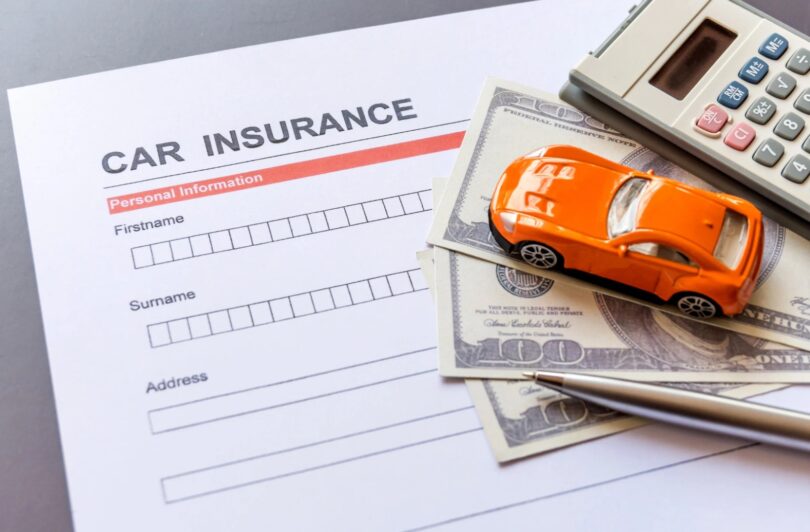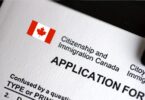Advertisements
It is mandatory for Canadian citizens to have car insurance but there are still people who drive uninsured, underinsured or drivers who even flee the scene after causing an accident. The possibility of this happening is why there is uninsured motorist coverage.
Uninsured Motorist Coverage (UMC) is a very important aspect of auto insurance in Canada, that protects you if you’re involved in an accident with a driver who lacks insurance or is unidentified, like in an event of a hit-and-run. The small percentage of drivers who operate vehicles without proper coverage makes UMC an essential safeguard for responsible motorists.
Understanding Uninsured Motorist Coverage
Uninsured Motorist Coverage Is a type of coverage that provides financial protection for you and the passengers of your vehicle when you’re involved in an accident where the driver who is at fault is either uninsured or cannot be identified. This coverage typically addresses:
- Bodily Injury: Medical expenses, rehabilitation costs, and compensation for pain and suffering resulting from the accident.
- Property Damage: Repairs to your vehicle or compensation for its loss, subject to certain conditions and deductibles.
It’s important to note that while UMC covers bodily injury in most provinces, property damage coverage can vary and may require additional endorsements.
Importance of Uninsured Motorist Coverage
Even though Canada has strict insurance laws, about 2% drivers still take the risk of driving uninsured. According to the Insurance Bureau of Canada (IBC), thousands of drivers operate without insurance each year and this makes it a real risk for insured motorists.
It is important to have uninsured motorist coverage for these reasonsl:
1. Financial Protection in Case of an Accident
One of the biggest risks of getting into an accident with an uninsured driver is financial loss. If the at-fault driver doesn’t have insurance, you may have to pay for your medical expenses, vehicle repairs, and even lost wages out of your own pocket.
With UMC, your insurer steps in and covers these costs, ensuring you don’t suffer financially due to someone else’s irresponsibility.
2. Coverage for Hit-and-Run Accidents
Hit-and-run accidents are unfortunately common, especially in urban areas. If a driver hits your car and flees the scene, you might not be able to track them down or hold them accountable.
Advertisements
- Without UMC, you may have no way to recover the costs of your injuries or vehicle damage.
- With UMC, you can file a claim with your insurance company, and they will cover your medical expenses and, depending on your policy, vehicle repairs.
3. Protection for Medical Expenses
Uninsured Motorist Coverage is especially important for medical expenses. A car accident can leave you with injuries that require hospitalization, physical therapy, rehabilitation, or even long-term care. If the other driver is uninsured, you might struggle to afford the medical costs.
UMC ensures that you receive the necessary medical care without worrying about the financial burden. It covers expenses such as:
- Emergency medical treatments
- Surgery and hospitalization
- Rehabilitation and physiotherapy
- Ongoing medical costs related to the accident
- Compensation for pain and suffering (in some provinces)
4. Compensation for Lost Wages
If an accident leaves you unable to work, the loss of income can be devastating, especially if you’re self-employed or have a family depending on your earnings.
- Without UMC, you might struggle to pay your bills while recovering from the accident.
- With UMC, you can receive compensation for lost wages, helping you stay financially stable while you heal.
5. Legal Support and Compensation
In some cases, uninsured drivers are not only breaking the law but may also lack the financial means to compensate you if you try to sue them. Even if you take legal action, it can be difficult to recover money from an uninsured driver.
UMC protects you from this risk by ensuring that you still receive compensation, regardless of whether the other driver can afford to pay for your damages.
6. Peace of Mind
Driving is unpredictable, and accidents can happen at any time. Knowing that you are protected no matter who is at fault gives you peace of mind. You don’t have to worry about the financial consequences of an accident caused by an uninsured or hit-and-run driver because your insurance has you covered.
7. Legal Requirements and Provincial Regulations
In most Canadian provinces, uninsured motorist coverage is mandatory or at least strongly recommended as part of a standard auto insurance policy. Even in provinces where it’s not required, opting in for UMC is a smart decision because it provides an extra layer of protection.
Each province has different rules regarding how much coverage you get. Now let’s look at some of the provinces and see how the coverage for the provinces are different:
Variations Across Provinces
Auto insurance in Canada is regulated at the provincial level, leading to variations in Uninsured Motorist Coverage requirements and coverage:
- Ontario: UMC is mandatory and included in all auto insurance policies, providing coverage for bodily injury and, under certain conditions, property damage.
- British Columbia: Managed by the Insurance Corporation of British Columbia (ICBC), UMC is included in basic auto insurance, covering bodily injury caused by uninsured or hit-and-run drivers.
- Alberta: UMC is mandatory, covering bodily injury but not property damage. Drivers can purchase additional coverage for property damage.
- Quebec: The public insurance plan covers bodily injury for all residents, regardless of fault, while property damage caused by uninsured drivers is addressed through private insurance with optional endorsements.
- Atlantic Provinces: UMC is generally mandatory, but specifics can vary, so it’s essential to review local regulations.
With these differences in mind, it is important that you consult your provincial insurance guidelines and speak with your insurance provider to understand the specifics of UMC in your area.
How Uninsured Motorist Coverage Works
In the event of an accident involving an uninsured or unidentified driver:
- Report the Accident: Immediately notify the police and your insurance provider. A police report is often required to process UMC claims.
- Claim Assessment: Your insurer will investigate the claim to confirm that the other driver is uninsured or cannot be identified.
- Coverage Application: Once confirmed, your UMC will cover eligible expenses, such as medical costs and, depending on your policy, property damage.
It’s important to note that UMC typically has coverage limits, which vary by province and policy. Reviewing your policy details ensures you understand these limits.
Optional Enhancements to UMC
While basic UMC provides essential protection, you might consider additional coverage options:
- Underinsured Motorist Coverage: Protects you when the at-fault driver has insurance, but their coverage is insufficient to cover your damages fully.
- Increased Coverage Limits: Allows for higher compensation amounts, offering greater financial protection.
Discuss these options with your insurance provider to make sure your coverage is in line with your specific needs.
Common Misconceptions About UMC
- “UMC isn’t necessary since insurance is mandatory.”: While insurance is required, some drivers still operate without it. UMC protects you in these situations.
- “UMC covers all accident-related expenses.”: UMC has specific limits and may not cover all costs, especially if they exceed policy limits.
- “UMC automatically includes property damage.”: In some provinces, UMC covers only bodily injury. Property damage coverage may require additional endorsements.
Frequently Asked Questions (FAQs)
Is UMC mandatory in all provinces?
No, while UMC is mandatory in most provinces, the specifics of coverage can vary. It’s essential to review your province’s regulations and your insurance policy details.
Does UMC cover hit-and-run accidents?
Yes, UMC typically covers bodily injury resulting from hit-and-run accidents. However, property damage coverage for hit-and-run incidents may vary by province and policy.
How do I know if I have UMC?
UMC is often included in standard auto insurance policies, especially in provinces where it’s mandatory. Review your policy documents or consult your insurance provider to confirm your coverage.
Are there deductibles associated with UMC claims?
Deductibles for UMC claims vary by province and policy. Some provinces may impose a standard deductible for property damage claims under UMC. Review your policy or consult your insurer for specific details.
Does UMC cover passengers in my vehicle?
Yes, UMC generally covers passengers in your vehicle for bodily injuries sustained during an accident with an uninsured or unidentified driver.
Conclusion
Uninsured Motorist Coverage (UMC) is an essential part of auto insurance in Canada, providing financial protection and peace of mind in case you’re involved in an accident with an uninsured or hit-and-run driver. Despite strict insurance laws, some drivers still operate without coverage, putting responsible motorists at risk. UMC ensures that you and your passengers are covered for medical expenses, lost wages, and, in some cases, vehicle repairs, preventing unexpected financial hardship.
Since auto insurance regulations are different across provinces, it’s important to review your policy and speak with your insurance provider to understand the level of protection that is available to you. When you have the right coverage in place, you can drive with confidence, knowing that you are safeguarded against the unpredictable.
Take action today and save yourself from significant stress and financial burden in the future.
Advertisements






